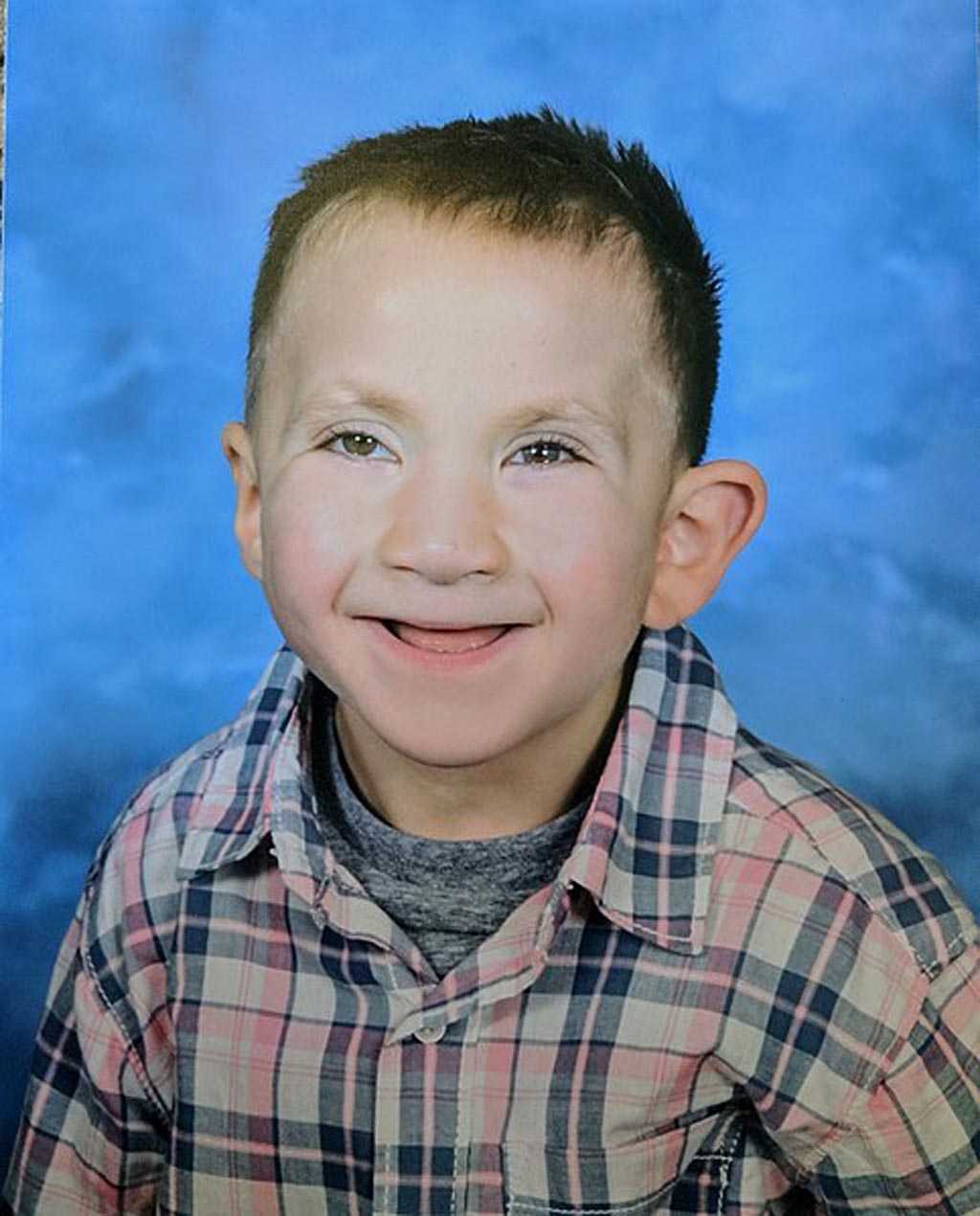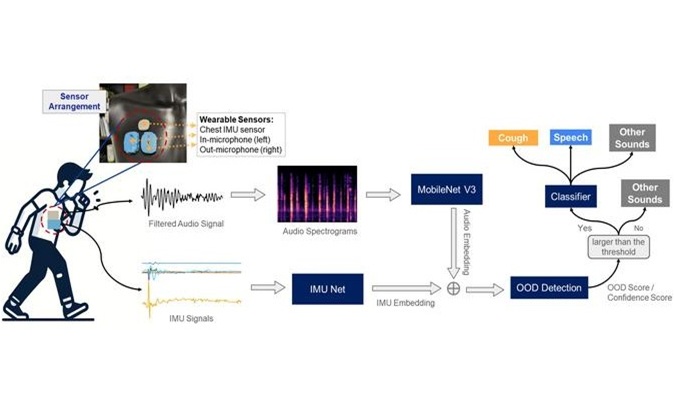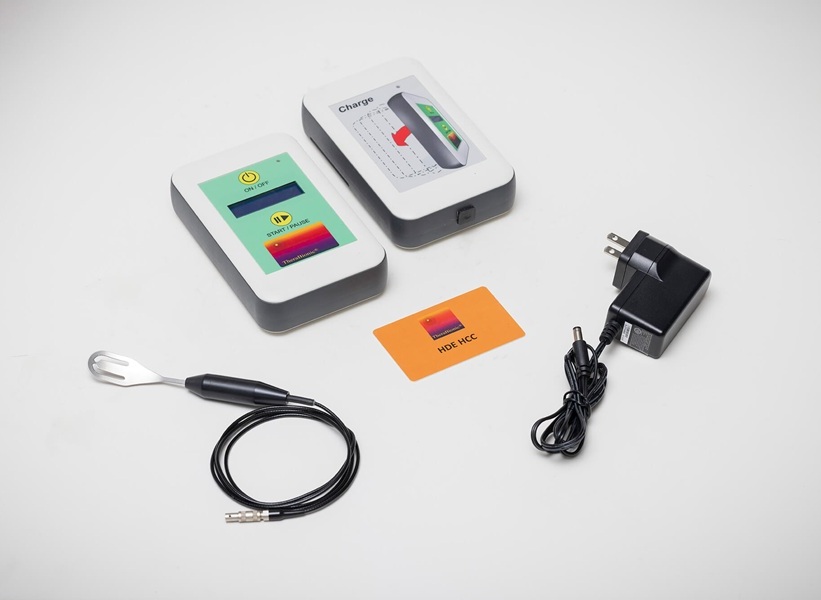Artificial Intelligence Helps Detect Rare Diseases
|
By HospiMedica International staff writers Posted on 18 Jun 2019 |

A child with Kabuki Syndrome (Photo courtesy of Wikimedia).
A new study suggests that an artificial intelligence (AI) neural network can be used to automatically combine portrait photos and genetic data to diagnose rare diseases more efficiently.
The prioritization of exome data by image analysis (PEDIA) project, under development by the University of Bonn (Germany), GeneTalk (Bonn, Germany), Charité University Medicine (Charité; Berlin, Germany), and other institutions, is designed to interpret exome data by analyzing sequence variants in portrait photographs, and integrating the results using the DeepGestalt phenotyping tool, a product of FDNA (Herzliya, Israel), which was trained with around 30,000 portrait pictures of people affected by rare syndromal diseases.
In a proof of concept study, the researchers measured the value added by computer-assisted image analysis to the diagnostic yield on a cohort consisting of 679 individuals with 105 different monogenic disorders. For each separate case, frontal photos, clinical features, and the disease-causing variants were submitted. The results showed that computer-assisted analysis of frontal photos improved the top 1% accuracy rate by more than 20–89%, and the top 10% accuracy rate by more than 5–99% for the disease-causing gene. The study was published on June 5, 2019, in Nature Genetics in Medicine.
“In combination with facial analysis, it is possible to filter out the decisive genetic factors and prioritize genes. Merging data in the neuronal network reduces data analysis time and leads to a higher rate of diagnosis,” said senior author Professor Peter Krawitz, MD, PhD, director of the Institute for Genomic Statistics and Bioinformatics at the University of Bonn. “This is of great scientific interest to us and also enables us to find a cause in some unsolved cases.”
“PEDIA is a unique example of next-generation phenotyping technologies,” said Dekel Gelbman, CEO of FDNA. “Integrating an advanced AI and facial analysis framework such as DeepGestalt into the variant analysis workflow will result in a new paradigm for superior genetic testing.”
Many rare diseases cause characteristic abnormal facial features in those affected, such as Kabuki syndrome, which is reminiscent of the make-up of a traditional Japanese form of theatre. The eyebrows are arched, the eye-distance is wide and the spaces between the eyelids are long. Another example is mucopolysaccharidosis, which leads to bone deformation, stunted growth, and learning difficulties. Such phenotype information has so far only been accessible for bioinformatics workflows after encoding into clinical terms by expert dysmorphologists.
Related Links:
University of Bonn
GeneTalk
Charité University Medicine
FDNA
The prioritization of exome data by image analysis (PEDIA) project, under development by the University of Bonn (Germany), GeneTalk (Bonn, Germany), Charité University Medicine (Charité; Berlin, Germany), and other institutions, is designed to interpret exome data by analyzing sequence variants in portrait photographs, and integrating the results using the DeepGestalt phenotyping tool, a product of FDNA (Herzliya, Israel), which was trained with around 30,000 portrait pictures of people affected by rare syndromal diseases.
In a proof of concept study, the researchers measured the value added by computer-assisted image analysis to the diagnostic yield on a cohort consisting of 679 individuals with 105 different monogenic disorders. For each separate case, frontal photos, clinical features, and the disease-causing variants were submitted. The results showed that computer-assisted analysis of frontal photos improved the top 1% accuracy rate by more than 20–89%, and the top 10% accuracy rate by more than 5–99% for the disease-causing gene. The study was published on June 5, 2019, in Nature Genetics in Medicine.
“In combination with facial analysis, it is possible to filter out the decisive genetic factors and prioritize genes. Merging data in the neuronal network reduces data analysis time and leads to a higher rate of diagnosis,” said senior author Professor Peter Krawitz, MD, PhD, director of the Institute for Genomic Statistics and Bioinformatics at the University of Bonn. “This is of great scientific interest to us and also enables us to find a cause in some unsolved cases.”
“PEDIA is a unique example of next-generation phenotyping technologies,” said Dekel Gelbman, CEO of FDNA. “Integrating an advanced AI and facial analysis framework such as DeepGestalt into the variant analysis workflow will result in a new paradigm for superior genetic testing.”
Many rare diseases cause characteristic abnormal facial features in those affected, such as Kabuki syndrome, which is reminiscent of the make-up of a traditional Japanese form of theatre. The eyebrows are arched, the eye-distance is wide and the spaces between the eyelids are long. Another example is mucopolysaccharidosis, which leads to bone deformation, stunted growth, and learning difficulties. Such phenotype information has so far only been accessible for bioinformatics workflows after encoding into clinical terms by expert dysmorphologists.
Related Links:
University of Bonn
GeneTalk
Charité University Medicine
FDNA
Latest AI News
Channels
Critical Care
view channel
Origami Robots to Deliver Medicine Less Invasively and More Effectively
Delivering medicine to ulcers or other internal sites often requires invasive procedures that can disrupt surrounding tissues and lengthen recovery times. Traditional magnetic actuators used in soft robotics... Read more
Improved Cough-Detection Technology Aids Health Monitoring
Coughing serves as an important biomarker for tracking a variety of conditions and can help monitor the progress of respiratory diseases or predict when someone’s asthma is being exacerbated.... Read moreSurgical Techniques
view channel
Novel Glue Prevents Complications After Breast Cancer Surgery
Seroma and prolonged lymphorrhea are among the most common complications following axillary lymphadenectomy in breast cancer patients. These postoperative issues can delay recovery and postpone the start... Read more
Breakthrough Brain Implant Enables Safer and More Precise Drug Delivery
Delivering medication directly to specific regions of the brain has long been a major challenge in treating neurological disorders. Current implants and infusion systems typically reach only one or two... Read morePatient Care
view channel
Revolutionary Automatic IV-Line Flushing Device to Enhance Infusion Care
More than 80% of in-hospital patients receive intravenous (IV) therapy. Every dose of IV medicine delivered in a small volume (<250 mL) infusion bag should be followed by subsequent flushing to ensure... Read more
VR Training Tool Combats Contamination of Portable Medical Equipment
Healthcare-associated infections (HAIs) impact one in every 31 patients, cause nearly 100,000 deaths each year, and cost USD 28.4 billion in direct medical expenses. Notably, up to 75% of these infections... Read more
Portable Biosensor Platform to Reduce Hospital-Acquired Infections
Approximately 4 million patients in the European Union acquire healthcare-associated infections (HAIs) or nosocomial infections each year, with around 37,000 deaths directly resulting from these infections,... Read moreFirst-Of-Its-Kind Portable Germicidal Light Technology Disinfects High-Touch Clinical Surfaces in Seconds
Reducing healthcare-acquired infections (HAIs) remains a pressing issue within global healthcare systems. In the United States alone, 1.7 million patients contract HAIs annually, leading to approximately... Read moreHealth IT
view channel
Printable Molecule-Selective Nanoparticles Enable Mass Production of Wearable Biosensors
The future of medicine is likely to focus on the personalization of healthcare—understanding exactly what an individual requires and delivering the appropriate combination of nutrients, metabolites, and... Read moreBusiness
view channel
Philips and Masimo Partner to Advance Patient Monitoring Measurement Technologies
Royal Philips (Amsterdam, Netherlands) and Masimo (Irvine, California, USA) have renewed their multi-year strategic collaboration, combining Philips’ expertise in patient monitoring with Masimo’s noninvasive... Read more
B. Braun Acquires Digital Microsurgery Company True Digital Surgery
The high-end microsurgery market in neurosurgery, spine, and ENT is undergoing a significant transformation. Traditional analog microscopes are giving way to digital exoscopes, which provide improved visualization,... Read more
CMEF 2025 to Promote Holistic and High-Quality Development of Medical and Health Industry
The 92nd China International Medical Equipment Fair (CMEF 2025) Autumn Exhibition is scheduled to be held from September 26 to 29 at the China Import and Export Fair Complex (Canton Fair Complex) in Guangzhou.... Read more
















